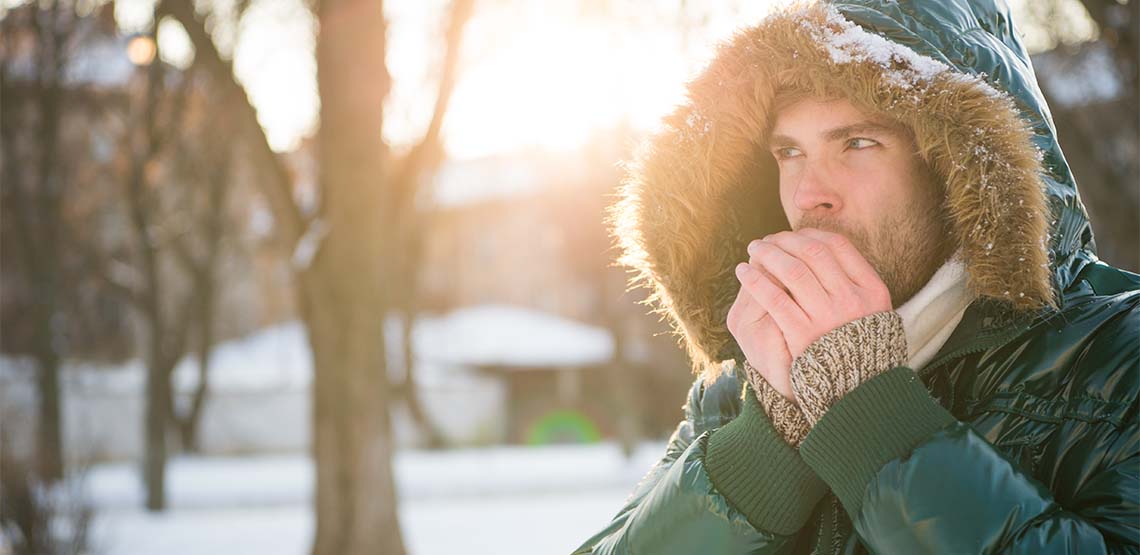How to Treat Hypothermia
With cold exposure becoming a hot topic amongst health enthusiasts, it is always important to use cold exposure in a safe and effective way. The truth is that exposure to extreme cold for long periods of time can lead to hypothermia, which can be a dangerous and life-threatening condition. We will cover how to treat hypothermia, so you can maintain your health in case it ever happens to you.
Hypothermia happens when the body starts to lose heat faster than it can produce it. This leads to dangerously-low body temperatures, falling below 95F. When the body’s temperature rapidly plummets, major systems and organs of the body, including your heart and nervous system, can no longer function. If immediate treatment is not found, hypothermia leads to death.
In this article, we are going to look at the symptoms of hypothermia, as well as the treatment methods used when it happens.
Symptoms of Hypothermia
When you go out in the cold, you might first shiver as your body gets used to it. In fact, this is one of the first symptoms of hypothermia. However, shivering alone does not mean you have hypothermia. Along with shivering, common signs of hypothermia include:
- Slow and shallow breathing.
- Slurred speech.
- Lack of coordination.
- Weak or low pulse.
- Fatigue or low energy.
- Drowsiness.
- Confusion.
- Memory loss.
- Bright, red skin.
- Loss of consciousness.
These symptoms often arise gradually. This is why many mountain climbers, such as those who attempt Mount Everest, do not fully realize it is happening and end up losing their lives on the mountain. Additionally, the confusion that occurs with hypothermia can lead to poor choices, making the situation that much worse.
Hypothermia can also occur in a variety of ways. It can happen from losing radiated heat, due to direct contact with the cold, or from wind, which carries the warm air layer away from your skin.
Treatment Options for Hypothermia
With hypothermia, it is of the utmost importance to seek out immediate medical attention. Along with medical treatment, first aid is also important when it comes to preventing the escalation of hypothermia.
So, what should you do if you or someone you know exhibits signs of hypothermia?
Use the Right First Aid Practices
Help the person get away from the cold. Gently help them move, avoiding quick or jarring movements as this can actually lead to a heart attack.
Moving them away from the cold is the main goal, as well as ensuring you remove any wet clothing. Layer the person in blankets and insulate them from the wet or cold ground. If possible, give them warm beverages to help warm their body back up. Warm compresses can also help, but it is also important to not apply heat directly to their body. This can actually lead to irregularities in a person’s heartbeat, which is not what you want.
Emergency Care
Seeking out immediate medical care is important since this can ensure the person is properly taken care of, as their body temperature is brought back to a safe range. Emergency medical care may include the following options.
1. Passive Rewarming
Mild hypothermia treatment is similar to first aid. It primarily involves layering the person with blankets and providing them with warm fluids to drink.
2. Blood Rewarming
This is for more extreme hypothermia situations. Blood rewarming involves literally removing the blood and warming it and recirculating it into the person’s body. In many cases, a hemodialysis machine is used to complete this treatment, which is normally used for individuals with poor kidney function.
3. The Use of Warm IV Fluids
Intravenous solutions, such as saline, can be warmed and used to help bring the person’s core body temperature back up within normal ranges.
4. Airway Warming
In many moderate to extreme hypothermia cases, airway warming methods will be used by emergency personnel. This involves the use of humidified oxygen delivered via an oxygen mask. This can help warm the airways slowly, bringing the body’s temperature back to a normal functioning level.
5. Irrigation
With the use of a warm saltwater solution, emergency practitioners may warm the body by introducing this solution via a catheter, such as to the pleura around the lungs or the abdominal cavity.
In Conclusion
Most individuals recover from hypothermia within 24 to 48 hours. At the end of the day, if anyone you know experiences hypothermia symptoms, it is crucial to get them out of the cold and in touch with emergency services as quickly as possible.
On top of this, prevention is always key. This means wearing proper layers, ensuring your skin is covered from the cold, staying dry in the cold (including avoiding sweating due to overexertion) and watching the amount of time you spend out in the cold.
Complications of hypothermia can include frostbite (frozen tissue) and death of tissue due to interrupted blood flow. Those with a higher risk of hypothermia may include the elderly, children and individuals with mental illness and alcohol or drug use. Also, those who use certain medications are at risk, as they might make it more difficult for your body to regulate its temperature properly.
